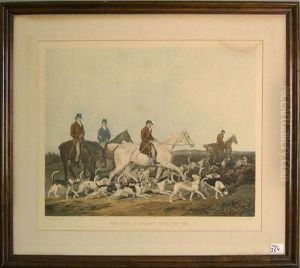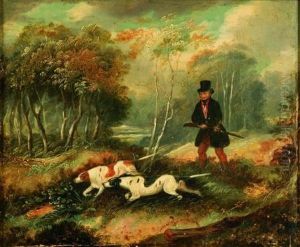James I Barenger Paintings
James I Barenger, born in 1780, was an English painter renowned for his exceptional work in depicting animals, particularly horses and dogs, with a remarkable level of detail and realism. His contributions to the world of art during the late 18th and early 19th centuries are notable for their technical skill and the vivid portrayal of his subjects. Barenger's ability to capture the essence and vitality of animals made him a sought-after artist among the British elite, who often commissioned him to paint their hunting scenes and prized animals.
Barenger's journey into the world of art was influenced by his family background. He was the son of James Barenger, an artist known for his flower pieces, which suggests that artistic talent ran in the family. Growing up in an environment surrounded by art, Barenger honed his skills from a young age. He further developed his artistic talents under the guidance of established artists of his time. This training, combined with his innate passion for wildlife and the countryside, steered him towards specializing in animal paintings.
Throughout his career, Barenger exhibited at prestigious institutions such as the Royal Academy and the British Institution, showcasing his work alongside the leading artists of his era. His paintings were celebrated for their precision and the lifelike representation of animals in their natural settings or as part of dynamic hunting scenes. Barenger's dedication to his craft and his ability to portray the beauty and grace of animals in motion helped elevate the genre of animal painting within the British art scene.
James I Barenger's legacy as an artist is reflected in the continued admiration for his work. His paintings are considered important contributions to the genre of animal art and remain highly valued by collectors and art enthusiasts. Barenger passed away in 1831, leaving behind a body of work that continues to be celebrated for its artistic excellence and its portrayal of the natural world. His influence persists, inspiring future generations of artists to pursue realism and detail in their depiction of animals.

